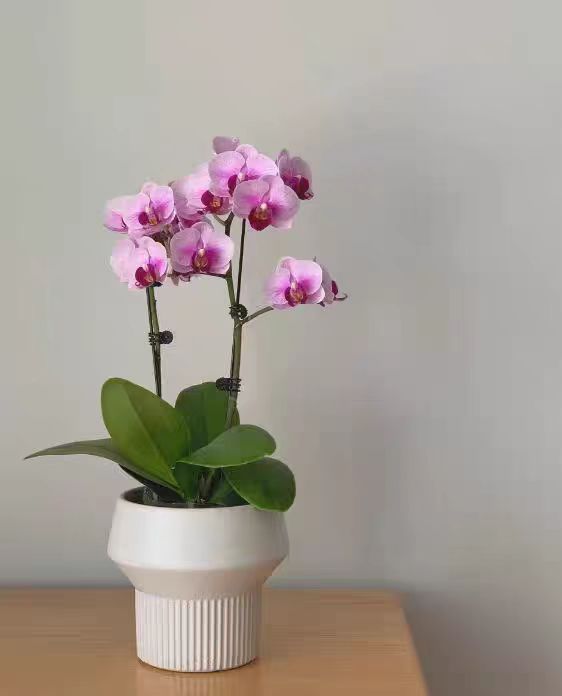For gardening enthusiasts, Phalaenopsis is undoubtedly a beautiful and popular flower. Its root system has unique requirements for the growth environment, and timely soil replacement is a crucial maintenance step to keep the plant healthy and promote blooming. So, when exactly should the soil of Phalaenopsis be changed? And when is the most suitable time for soil replacement? There are many plant growth laws and maintenance techniques behind this.
Determine the timing of soil replacement based on the growth cycle:
Post-flowering recovery period: After the flowers of Phalaenopsis wither, it enters a short dormant and recovery stage. At this time, the plant's demand for nutrients decreases, and its metabolism slows down, making it one of the ideal periods for soil replacement. Generally, it is more appropriate to change the soil within 1 to 2 weeks after the flowers have completely withered. After the flowering period, the nutrients in the original planting medium are basically exhausted, and its air permeability and water retention capacity also deteriorate. Timely replacement with fresh planting medium can provide a good environment for the subsequent sprouting of new buds and the growth of roots of the plant, helping it quickly regain its vitality and accumulate energy for the next blooming.
Early stage of new bud germination: When the Phalaenopsis starts to germinate new buds and the new buds grow to 2 to 3 centimeters in length, it is also suitable for soil replacement. During this stage, the plant has strong vitality, and its root system has a strong recovery ability. Even if the roots are slightly damaged during the soil replacement process, they can heal relatively quickly. At the same time, the new planting medium can provide sufficient space and nutrients for the rapidly growing new buds and roots, ensuring the smooth development of the plant during the vigorous growth period.
Decide the time for soil replacement according to the state of the planting medium: Commonly used planting media for Phalaenopsis, such as moss, bark, and sphagnum moss, will gradually decompose and rot over time. If the planting medium is obviously black, soft, and emits an odor, it means that the planting medium has lost its good air permeability and water permeability and cannot meet the respiration and growth needs of the root system. In this case, the soil must be replaced as soon as possible. In addition, when a large number of weeds, pests, and diseases occur in the planting medium, or when the planting medium is severely compacted and water is difficult to penetrate and drain after watering, the planting medium should be replaced in a timely manner to avoid affecting the normal growth of Phalaenopsis.
The climate conditions in spring and autumn are mild, with the temperature usually ranging from 15 to 25°C. It is neither as hot as in summer nor as cold as in winter, making it very suitable for the seedling recovery of Phalaenopsis after soil replacement. In spring, all things come back to life, and the growth activity of the plant is enhanced. After soil replacement, it can quickly adapt to the new environment and grow rapidly; in autumn, the temperature gradually decreases, and the growth rate of the plant slows down, but it is still in an active state. At this time, soil replacement can prepare the plant for safe overwintering and growth in the coming spring.
During the high temperature in summer, the growth rate of Phalaenopsis slows down, and it may even enter a semi-dormant state. At this time, soil replacement will cause great harm to the plant. After soil replacement, it is difficult for the plant to adapt to the high-temperature environment, which is likely to cause problems such as root rot and yellow leaves. In winter, the temperature is low, the growth of Phalaenopsis stops, and its ability to adapt to environmental changes is weak. After soil replacement, the root system is difficult to resume growth and may also suffer from frost damage. Therefore, unless there are emergency situations such as severe deterioration of the planting medium and the threat of pests and diseases, soil replacement for Phalaenopsis should be avoided as much as possible during the high temperature in summer and the low temperature in winter.
The choice of the timing for soil replacement of Phalaenopsis is of vital importance. Only by comprehensively considering the growth cycle, the state of the planting medium, and seasonal changes can the most suitable time for soil replacement be determined. Master these key points to provide a high-quality growth substrate for Phalaenopsis and allow it to thrive in the new soil.
When is the right time to change the soil for Phalaenopsis?

Share with
Tagged in :




Leave a Reply